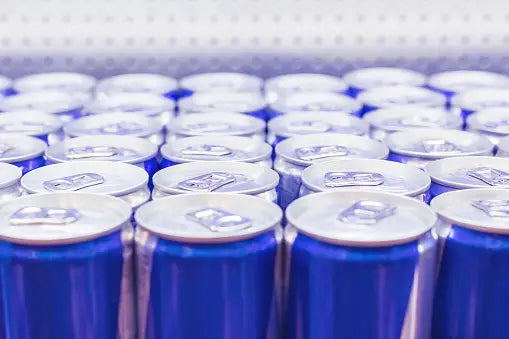In our dynamic world, an abundance of knowledge is at our fingertips, empowering us to make informed choices. In the past, acquiring knowledge relied on word-of-mouth, books, and education, but now we can effortlessly access information on any subject that piques our interest through our smartphones. This accessibility is especially advantageous when it comes to selecting what we consume. As we continually discover what is beneficial or detrimental to our well-being, the list of considerations seems to expand and evolve daily, which can be overwhelming. Examining ingredient lists can be intimidating, with many components being difficult to pronounce, let alone comprehend. This is especially true for energy drinks.
Let's delve into one of the most popular energy drinks, Red Bull, and take a closer look at its ingredients. The original Red Bull energy drink contains Carbonated Water, Sucrose, Glucose, Citric Acid, Taurine, Sodium Bicarbonate, Magnesium Carbonate, Caffeine, Niacinamide, Calcium Pantothenate, Pyridoxine HCI, Vitamin B12, Natural and Artificial Flavors, Colors. While it may not boast the worst ingredient list, it certainly falls short of being the best. Understanding the contents of your energy drink shouldn't require a chemistry degree. This is one of the driving forces behind the creation of Sol Energy.
Even some other energy drinks marketed as "clean" still have room for improvement in their ingredient lists. Let's turn our attention to Celsius, a popular energy drink that has gained rapid consumer attention for its claim of being free from added sugar and artificial ingredients. At first glance, most people might consider it acceptable. The bottle touts "healthy energy, accelerates metabolism, burns body fat." The ingredient list for Celsius Peach Vibe includes MetaPlus Proprietary Blend: Taurine, Guarana Extract (Seed), Caffeine (as Caffeine Anhydrous), Glucuronolactone, Ginger Extract (Root), Green Tea Leaf Extract Standardized to 15% EGCG. Other Ingredients: Carbonated Filtered Water, Citric Acid, Sucralose, Natural Flavor, Beta-Carotene (Color). While certainly better than the average energy drink, it still falls short. Celsius was recently banned by the NCAA (National Collegiate Athletic Association). According to MARCA, a popular sports website, "The NCAA decided to ban the popular energy drink Celsius after conducting a study that revealed consuming one bottle is equivalent to having up to five cups of coffee. Their study demonstrated that Celsius drinks contain illegal banned stimulants such as ginseng, guarana, L-carnitine, and taurine. All of these ingredients are also officially banned by the National Olympic Committee and the World Anti-Doping Agency." (1)
Now, let's finally examine the ingredients of Sol Energy's Peach Mango energy drink: brewed yerba mate tea (carbonated water, yerba mate extract), natural flavors, citric acid, caffeine, steviol glycoside (Red M), monk fruit. Just seven clean, natural ingredients, none of which are prohibited by any organization. Our mission was to create a product we could feel confident about consuming when we need an extra boost, and we truly believe we've accomplished that goal.
Sources:
(1) https://www.marca.com/en/ncaa/2023/04/13/643810dae2704efe6d8b4609.html
